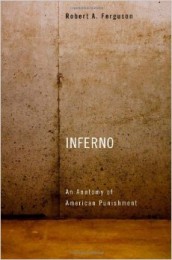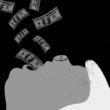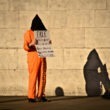We like to think of Guantánamo and Abu Ghraib as nasty aberrations from American justice, but what if they’re more or less par for the course?
When I was at Gitmo a few years ago covering the trial of a 15-year-old captured on the Afghan battlefield, it came out that the kid’s interrogator had threatened him with the ultimate punishment: being sent to an American prison where he would probably be raped. That a “normal” American prison might be understood as being a degree or two worse than Gitmo or Bagram prison ought to scare the hell out of us.
 Disease, rape, abusive and under-trained guards, overcrowding, profit motive, hair-trigger isolation confinement, mostly beyond the purview of legal redress: many of our prisons are everyday legal black holes. The goal of rehabilitation has been trampled to death and only raw punishment remains. As a young Home Minister, Winston Churchill correlated a nation’s degree of civilization to the way it treats its criminals. We don’t want to know what this conservative politician would make of the abysmal quality of our prisons.
Disease, rape, abusive and under-trained guards, overcrowding, profit motive, hair-trigger isolation confinement, mostly beyond the purview of legal redress: many of our prisons are everyday legal black holes. The goal of rehabilitation has been trampled to death and only raw punishment remains. As a young Home Minister, Winston Churchill correlated a nation’s degree of civilization to the way it treats its criminals. We don’t want to know what this conservative politician would make of the abysmal quality of our prisons.
And then there’s the quantity.
We lead the world in incarceration, beating out authoritarian nations like Saudi Arabia, Egypt and China. We have come to lock people up at a rate not far behind that of the Soviet Union at the height of the Gulag. Given these dimensions, our penal system is, as Robert A. Ferguson notes in his new book, “beginning to topple under its own punitive weight.”
Ferguson’s Inferno, a wide-angle “anatomy of American punishment,” does much more than chant the usual litany of dismal penal statistics. Ferguson, a professor of law and literature at Columbia, wants us to understand the deep ideological and cultural roots of our national transformation into a penal colony.
It’s not just a matter of law—like all the best lawyers, Ferguson is appropriately dismissive of the power of law to control, much less reform, our system of punishment. Police, corrections officers, and even prosecutors are governed at least as much by habit and custom as by legal rules, and our courts have usually decided they don’t want to know what happens in our prisons. At every level, punishment generates its own force and logic; it “dominates the institutional momentum of its ostensible overlord, the law, even as it remains mostly unseen.”
Ferguson doesn’t offer 10-point plans or any other little tips for cramming the punitive genie back in its bottle. And that’s more than fine; rectifying a crisis of this scale is going to be a generational effort requiring more deep thinking than instant-noodle solutions.
Robert A. Ferguson’s “anatomy of American punishment” shows us the ideological and cultural roots of our national transformation into a penal colony.
Instead, Ferguson surveys the major thinkers who have championed the punitive state, starting with Machiavelli, who thought the slightest liberality in punishment invited rebellion and anarchy. From another angle, we have Protestant theologian (and lawyer) John Calvin who, writes Ferguson, “understood the universe through waves of punishment.” He believed salvation would be denied all but a handful, and thought our earthly institutions should follow suit. We might think of our supermax prisons as Calvinist cathedrals.
There are some surprises. Kant, the quintessential Birkenstock-wearing human-rights guy, was a merciless retributivist, the Charles Bronson of the Enlightenment. On the other hand, Nietzsche, patron saint of so many ruthless jerks, turns out to be a pussycat on law-and-order issues. “Distrust all in whom the impulse to punish is powerful.” Good advice. Dostoevsky, Victor Hugo, Melville and Dante (among others) are also recruited as guides to our penal inferno.
A running question throughout Inferno is whether this hell has been built up through negligence or as a deliberate act of national sadism. One factor that might have clarified this question is the country’s sharp increase in violent crime that began in the early 1960s, peaked in the early 1990s and has steadily reversed downward since. This decades-long crime spike does not by itself explain, much less justify, our gulag-building boom, or torturing nearly 100,000 Americans with long-term solitary confinement, or the way we have come to lock people up for life without parole even for nonviolent offenses. But this rise in crime was the social backdrop to our ongoing orgy of punishment. After two decades of falling crime, perhaps attitudes and institutions will change.
Or perhaps not.
Because even as crime rates continue to fall, our steroidal penal habits seem set in concrete, held fast by the lobbying power of for-profit prisons and prison-guard unions, habitually draconian legislators and most of all, mass inertia among a citizenry that channels anxiety from growing economic insecurity into punishment of even poorer people, often black or brown, maintaining a living hell in the name of security.
Chase Madar is an attorney in New York and the author of The Passion of [Chelsea] Manning: The Story behind the Wikileaks Whistleblower (Verso), published last year.







0 Comments